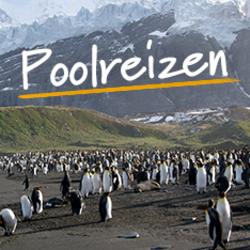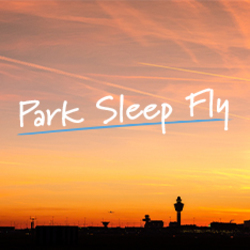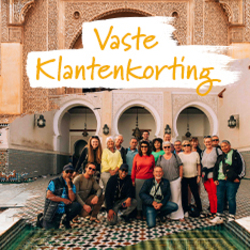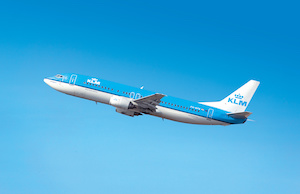Op reis in het najaar
BekijkActivities
- Culture
- Multi-Country Holidays
- Cultural Wonders
- Multi-Country Culture Holidays
- Discover a stunning mix of Balkan countries with beautiful scenery and fascinating cultures. Explore the cosmopolitan and historic Bosnian capital – Sarajevo. Visit enchanting Mostar with its iconic bridge. Admire the beauty of the sparkling Adriatic in Kotor, Montenegro. Walk the pristine marble streets and city walls of Dubrovnik. Enjoy gentle walking in the stunning Durmitor National Park
Food
-
1
Start Dubrovnik Airport; drive to Kotor in Montenegro.
We start in Dubrovnik Airport in Croatia before transferring (approx. 3 hours) to the beautiful sea-faring town of Kotor. Neatly tucked away in one of South East Europe's largest fjords, Kotor is a cultural treasure dating from the 12th Century and still retains the Mediterranean ambience of the region.Hotel Porto In or similar
-
2
Kotor city tour; boat ride to Gospa od Skrpjela and Perast islands in the Bay of Kotor.
Today we visit Kotor's 4.5km long fortification walls and its many churches and palaces. These are the main reasons why in 1979 Kotor was included on UNESCO's list of natural and cultural heritage sites. Our approx. 2 hour walk will take you through some of Kotor's spacious squares, lined with grand townhouses, known locally as palaces, and various impressive religious buildings. After our tour, we take a short transfer to Perast, a town once owned by the Venetians, a fact which explains the distinctly Italian feel. The panorama of Perast is dominated by the 17th Century church of St Nikola, protected by a Venetian fortress and surrounded by beautiful palaces and gardens once built by the famous sea captains of the Adriatic. Here we have lunch overlooking the bay. Following lunch, we take a boat ride to the 'Lady of the Rocks' island and visit the chapel. The views of towering cliffs of the Dinaric Alps from the boat are truly impressive, giving us a different perspective of the Montenegrin coastline. We transfer back to our hotel by boat, the best way to really enjoy this fabulous setting. In the evening we will visit Budva, one of the oldest settlements on the Montenegrin coast with perhaps the best nightlife of the entire area. Hotel Porto In or similar
-
3
Transfer to Cetinje for city tour. Drive to UNESCO Durmitor N.P.,visiting Ostrog Monastery en route.
We transfer (approx. 2 hour) to Cetinje for a city tour. The town of Cetinje lies at the foot of Lovcen Mountain and was the ancient capital of Montenegro. Since 1485 Cetinje has been the sacred centre of Montenegro, and as a result, the city houses more museums and cultural heritage sites than any other city in Montenegro. Our tour will take us to some of the main sites in this lonely cultural oasis in the Cetinjsko fields. From Cetinje, we set off towards Montenegro's mountainous interior, en route visiting the holy shrine of St.Vasilije high up in the shady Ostrog Mountains. Few people expect to witness such a marvellous spectacle when they arrive. Intricately carved into the rising rock face, the Ostrog Monastery is considered by many to be the most inspiring Orthodox sacred place in the former Yugoslavia. The monastery has become the largest religious pilgrimage site in the country, with many Orthodox Christians and even Catholics and Muslims paying homage to St. Vasilije, the founder of the 17th Century monastery. The day culminates with a drive (approx. 3 hours) through isolated villages and high mountain passes to the small ski resort of Zabljak. Zabljak sits neatly on a plateau at 1500m, surrounded by beautiful pinewood forests, high alpine mountains, and the deep Tara Canyon.Hotel Zabljak or similar
-
4
Walk around Zabljak Plateau with its lakes and traditional highland villages.
Today we explore the Zabljak Plateau with its numerous lakes and traditional villages. We start with a walk around the area's largest lake, a beautiful spot with crystal clear waters reflecting the surrounding peaks. Around lunchtime we transfer to the village of Podgora. The village has recently become part of a regional ecovillage network helping to promote tourism in rural communities. A local family provides us with a tasty lunch of traditional Montenegrin mountain food. We will also visit and enjoy views from one of the numerous viewpoints above Tara Canyon, which is considered to be the deepest European Canyon and as such is listed in the UNESCO World Heritage list.We then transfer back to Zabljak and have the afternoon free to explore, enjoy a scenic walk, go for an invigorating dip in the lake, or perhaps drink a glass of local wine or beer in one of Zabljak's cafés.Hotel Zabljak or similar
-
5
Transfer to the Piva River on the border with Bosnia; lunch and a walk along the banks of this beautiful river; drive to Sarajevo.
Transfer (approx. 2-3 hours) to the border between Montenegro and Bosnia, via Durmitor's interior with its impressive peaks, isolated mountain lakes and deep canyons. The mountain roads are narrow and we will meet the occasional shepherd with his sheep moving up to the higher grassy pastures of Durmitor. This seasonal migration has taken place for centuries and is very much part of Montenegrin culture and tradition, even today. We wind our way out of the Piva Gorge down to Scepan Polje, the border crossing into Bosnia & Herzegovina, stopping where possible to enjoy the views in this wild and uninhabited part of Bosnia. Before lunch, we take a walk along the Piva River to an old suspension bridge, which for a long time was the only connection between the two river banks. The water here is wonderfully pure and offers a great setting for a photo. After lunch above the Piva River, we continue through an empty and mountainous part of east Bosnia & Herzegovina to Sarajevo.Hotel Cosmopolit or similar
-
6
City tour including the Sarajevo Tunnel Museum.
Today we have a full day exploring Sarajevo on foot and by bus. One of the most culturally diverse cities in Europe, Sarajevo spent over 400 years under Turkish governorship until the Austro-Hungarians arrived in the late 19th Century. Forty years later, the empire collapsed when Archduke Ferdinand was assassinated here, hastening the outbreak of the First World War. The late 20th Century saw Sarajevo host the Winter Olympics in 1984, and the long siege of the city during the recent conflict. Our tour of the major historical, cultural and war sites in the city will help you to piece together its complex history.Our day involves a walking tour of the main sites, and a visit to the famous Sarajevo Tunnel Museum. The tunnel provided the citizens of Sarajevo with a lifeline during Sarajevo's 1400 days of isolation and was the only reliable way of supplying goods and electricity to the city as all other supply lines were cut off by the Serbian Army. This is a sobering and fascinating visit.Hotel Cosmopolit or similar
-
7
Drive to Lukomir, Bosnia and Herzegovina's highest inhabited village; walk to canyon.
We transfer (approx. 2 hours) to Lukomir, Bosnia's highest village at 1469 metres, with its ancient 'stecci' (mediaeval tombstones). Here we get an insight into the traditional way of life. Customary dress and the occasional turban and fez are still worn, going hand in hand with the more contemporary features of everyday life such as electricity and running water. The village houses here are a powerful image of a simpler time. We then take a walk down towards the Rakitnica Canyon nearby and find some excellent viewpoints to admire this majestic scenery. The scale of the mountains coupled with the canyon far below are sights that will live long in the memory. Lunch is taken in the village prepared by one of the main families still living there and will be traditional and filling. We return to Sarajevo at the end of the day.Hotel Cosmopolit or similar
-
8
Transfer to Mostar for sightseeing and city tour.
We transfer (approx. 2.5 hours) to Mostar where we have a whole day to visit this beautiful Herzegovinian city. Mostar was founded in the 15th Century and the architecture is a precious combination of Turkish ingenuity and Herzegovinian and Dalmatian workmanship. We spend the morning and afternoon exploring Mostar, a city that was famously split during the conflict of the early 1990s. You will still see the scars of war, but these days Mostar is once again a warm and bustling place with an intriguing history. The rest of the day is free for you to explore the city on your own.Hotel Kapetanovina or similar
-
9
Explore Ottoman town of Pocitelj, Kravica Waterfalls and visit nearby village of Blagaj.
Our first stop today will be Pocitelj. This oriental style town has recently been added to the list of UNESCO world heritage sites and also hosts the longest operating art colony in southeast Europe. The most striking object in Pocitelj is the Sahat Kula, a silo-shaped fort that dominates the skyline from a hill above the town. It used to house watchmen and military guarding against possible invasion from the Neretva Valley. Our next stop will be Kravica Waterfall, a wonderful green oasis in the rocky Herzegovinian landscape. After a short walk and perhaps even a cooling swim we head off for lunch to Blagaj. Blagaj's highlights are the Buna Spring and the adjacent Ottoman house/monastery. The spring here is amazing. It flows out of a 200m cliff wall and single-handedly creates the Buna River. Unsurprisingly, the Ottoman sultan was impressed and ordered a Tekija to be built right next to it. This 16th Century house/monastery was built for the Dervish cults and is still one of the most mystical places in all of Bosnia & Herzegovina. Blagaj's Old Town is worth taking a walk through. This lazy Herzegovinan town moves at a slow pace and many of its old structures are reminiscent of Ottoman days. In the vicinity are also old flour mills that the strong Buna River used to power. We spend the late afternoon and evening in Mostar.Hotel Kapetanovina or similar
-
10
Transfer to Trebinje, followed by wine tasting; continue to Dubrovnik.
Our journey now takes us back to Dubrovnik via Radimlja with its numerous beautiful mediaeval Christian tombstones, and Trebinje – the southernmost city in Bosnia & Herzegovina. Trebinje has a rich history that dates back to the Middle Ages. Here we will visit a family-owned winery and get a taste of life in old Herzegovina. Here we will venture into the cellars for an intimate taste of the rich, earthy, bold tastes of the red wines. Herzegovina's wines are amongst the newest in the 'second world' wine category. This tradition, however, has been in existence since Roman times. Herzegovina's sunny Mediterranean climate and rich hinterland soils produce the finest wines in southern Europe. After the lunch break we will travel south to our final destination Dubrovnik; a magnificent walled city that lies at the southernmost tip of Croatia. Formerly a prosperous trading centre, Dubrovnik is now a UNESCO World Heritage Site, and its perfectly preserved Old Town and rich cultural life draw many visitors each year. We end the day with free time in Dubrovnik, so you might either go swimming in the warm Adriatic or explore the Old Town on your own and take a walk along the ancient walls of Dubrovnik.Hotel Komodor or similar
-
11
End Dubrovnik.
The trip ends this morning in Dubrovnik after breakfast. You may however wish to extend your stay in the Croatian capital to further explore its cobbled streets or enjoy the beautiful coastline. Should you wish to do so please ask a member of the sales team about our post-tour nights.
















































